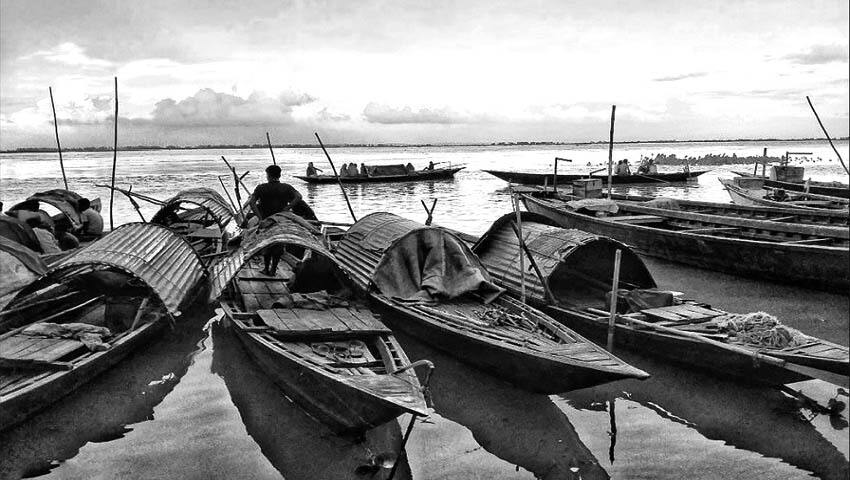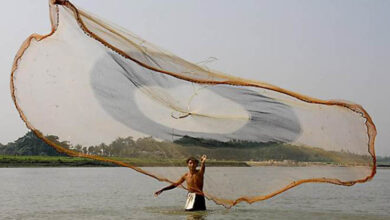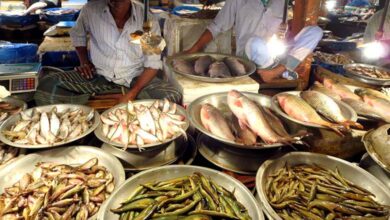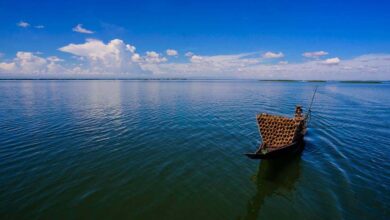In the serene landscapes of Gaibandha, where rivers have long been a source of sustenance and livelihood, fishermen have endured a series of challenges that are reshaping their way of life. For generations, these fishermen cast their nets days and nights, with their daily income tightly tethered to their daily catch. However, recent times have brought forth a myriad of crises, forcing them to consider alternative professions.
Crisis in catching:
The primary driver of this shift is the diminishing fish population in the rivers. The Department of Fisheries has reported a scarcity of fish in the rivers and canals, largely attributed to the use of illegal nets which has very tiny rectangular nylon mesh that even fingerlings can’t escape. It’s locally called “China duari net” (চায়না দুয়ারী জাল). This event leads a to very less or no fish population in this area.
In Gaibandha district alone, there are more than 30,000 fishermen, including those in the Balashi Ghat area of Phulchari Upazila. Among them, 18,000 families depend solely on fishing as their primary source of income. The region boasts over 500 ponds and more than 20 small and large canals.
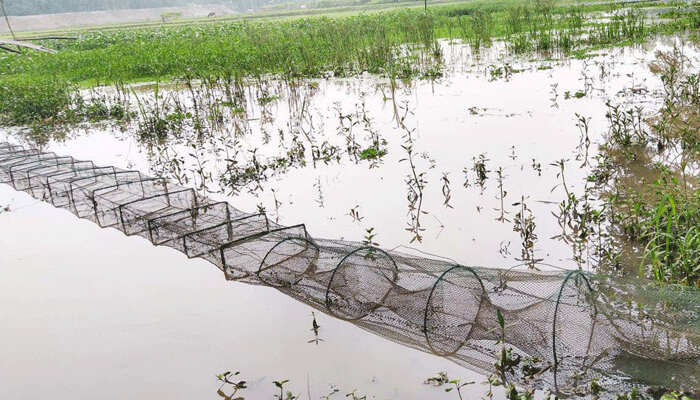
Cycles of debt:
To make ends meet, these fishermen often find themselves caught in a cycle of borrowing from various non-governmental organizations (NGOs) to cover their family expenses and provide education for their children. Their hopes are pinned on better catches during the rainy season and floods. However, the unpredictable nature of fish abundance leaves many falling short of their catch targets.
In desperation, some fishermen are compelled to sell their homes, cattle, and goats to repay their loans. Just a decade ago, they could anticipate when fish would abound, but now, the timing remains uncertain. Consequently, many are reluctantly leaving their original profession to seek alternative livelihoods.
A harsh reality on char:
Fishermen in the Tista and Brahmaputra char (alluvial land) face the most severe struggles. Changing their profession isn’t a viable option due to the exorbitant cost of nets required for deep-water fishing in the Brahmaputra River. Despite substantial investments, they continue to struggle to capture an adequate quantity of fish. Moreover, their illegal nets are frequently seized during authorities’ raids.
Stories of hardship:
Akkas Miah, a 54-year-old fisherman from Balashi Ghat in Phulchari Upazila, shares his plight, “I spend my days worrying about my family because the river no longer yields fish. My elder son, Abdullah, has left fishing and now works in a garment factory in Gazipur. I am facing immense hardships while providing for my younger son and my daughter, who is of marriageable age.”
Another former fisherman from the Kamarjani area along the Brahmaputra River side explains, “We must obtain permission from local influential figures and share a portion of our earnings with them to fish in the river. Even after paying these fees, it’s challenging to catch at least five kilograms of fish. The money we earn is insufficient to support our families, which is why I have turned to driving an auto-rickshaw, leaving behind my fishing profession.”
The collective struggle:
Sayeed Mia, a member of the Balashi Ghat Fishermen’s Association, sheds light on the dire situation, saying, “Hundreds of fishermen families depend on fishing in the Brahmaputra River. We can only operate for five or six months during the rainy season. The income from this period must sustain us for the remainder of the year. Many of us resort to taking loans from NGOs, and some struggle to make ends meet with interest-based money.”
A bit of hope:
In response, Gaibandha District Fisheries Officer Faisal Azam mentions efforts to formally recognize fishermen. Currently, there are 18,599 registered fishermen in the district, previously lacking formal recognition, but now being provided with smart cards.
Azam emphasizes the impact of reduced water levels in the Tista and Brahmaputra rivers and canals on fishing activities. He suggests creating alternative employment opportunities during the dry season to address the challenges faced by the fishing community. A formal report on the matter is soon to be submitted to higher authorities.
As Gaibandha’s fishermen grapple with an uncertain future, they look towards initiatives that might alleviate their livelihood challenges and restore the rivers’ bounty they’ve relied upon for generations.

